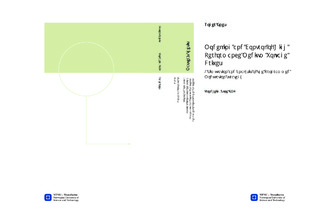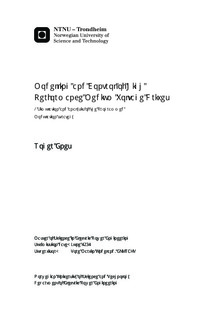| dc.contributor.advisor | Undeland, Tore Marvin | nb_NO |
| dc.contributor.author | Enes, Roger | nb_NO |
| dc.date.accessioned | 2014-12-19T13:53:26Z | |
| dc.date.available | 2014-12-19T13:53:26Z | |
| dc.date.created | 2012-11-08 | nb_NO |
| dc.date.issued | 2012 | nb_NO |
| dc.identifier | 566404 | nb_NO |
| dc.identifier | ntnudaim:8285 | nb_NO |
| dc.identifier.uri | http://hdl.handle.net/11250/257329 | |
| dc.description.abstract | In the master thesis the concept of Programmed Modulation is investigated for motor drives with Three-Level NPC inverter. Programmed Modulation operates with pre-calculated PWM switching-patterns, which enables the facility of off-line optimization of the converter switching-instants. The Optimization objectives are several, two commonly known are Selective Harmonic Elimination and Synchronous Optimal Modulation. The latter optimization focuses on generating a switching-pattern that will reduce the phase current harmonics. A reduction of harmonic components in the phase currents, means that a reduction in switching frequency is possible. The switching loss component, compared to the total loss in IGBTs increases as the voltage level increase. A reduction in switching losses opens for an increase in the nominal current limit in IGBTs. Hence, reductions in switching frequency gives an increase in power density.Conventional current control strategies cannot be used in a switching-pattern based drive system without sacrificing the optimality of the applied switching-pattern. A novel approach is therefore required to obtain dynamic control. For this has the stator flux trajectory control method been chosen and tested. A simulation model, specially built for Programmed Modulation, is proposed in this thesis. The model has a Stator Flux Trajectory Controller (SFTC) that calculates manipulation of the optimal switching-pattern, the manipulations are added to the original optimal switching-pattern to control the actual stator flux in the drive system. This SFTC is also used to eliminates, fast, deviations between the actual stator flux and a calculated optimal stator flux. This effectively eliminates the currents transient that otherwise could arise after a switching-pattern exchange, due to mismatch between optimal flux and actual flux trajectory.The modulation strategy has been simulated, results shows that fast dynamic control is obtained by controlling the alpha- and beta-components of the stator flux, in rotor field oriented coordinates. Combined with the use of Synchronous Optimal Modulation switching-patterns is this a very promising modulation strategy that have the required qualities for medium voltage drives. The simulation model needs further development, suggestions are given in the further work section. | nb_NO |
| dc.language | eng | nb_NO |
| dc.publisher | Institutt for elkraftteknikk | nb_NO |
| dc.subject | ntnudaim:8285 | no_NO |
| dc.subject | MSELPOWER Master of Science in Electric Power Engineering | no_NO |
| dc.title | Modelling and Control of High Performance Medium Voltage Drives: - Simulation and analysis of the Programmed Modulation strategy | nb_NO |
| dc.type | Master thesis | nb_NO |
| dc.source.pagenumber | 139 | nb_NO |
| dc.contributor.department | Norges teknisk-naturvitenskapelige universitet, Fakultet for informasjonsteknologi, matematikk og elektroteknikk, Institutt for elkraftteknikk | nb_NO |

